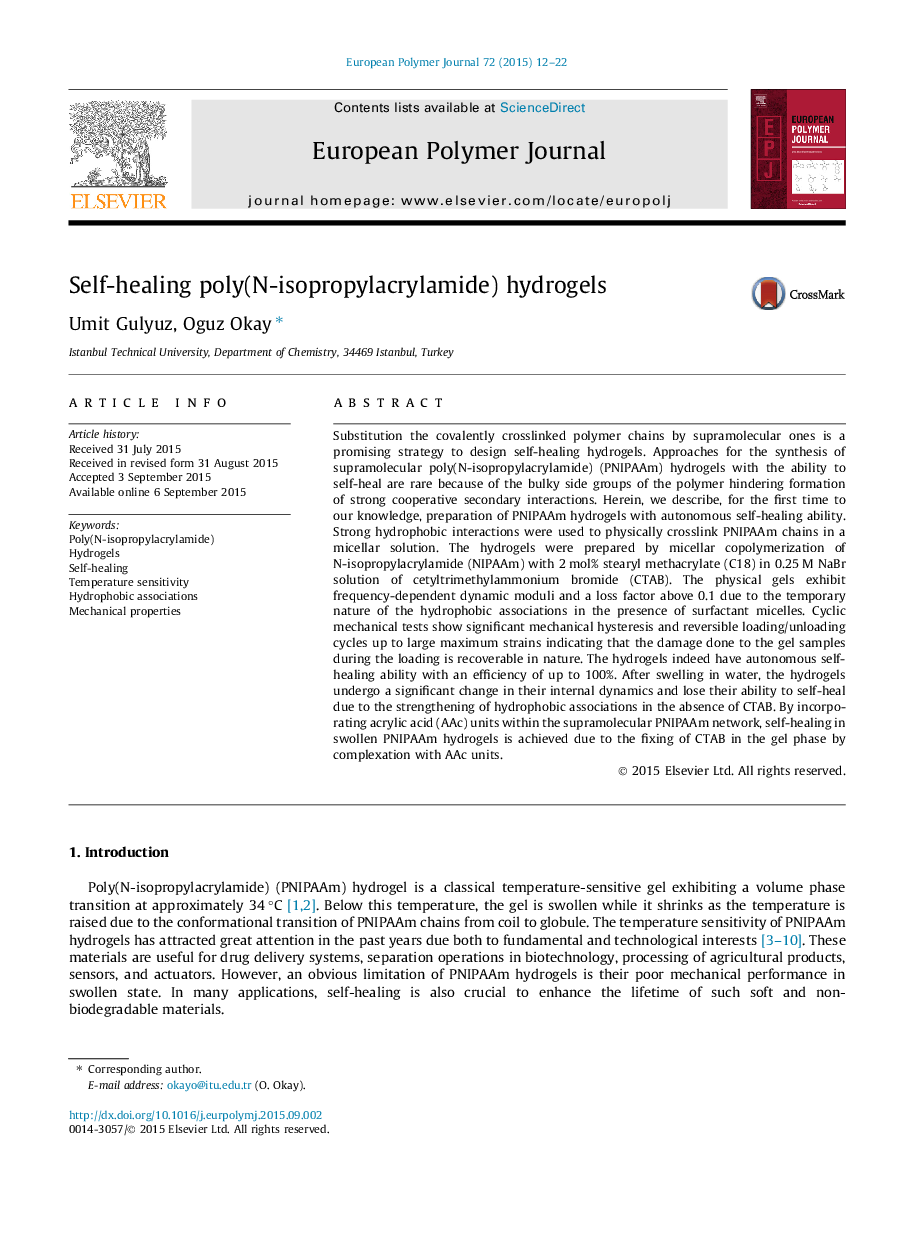| کد مقاله | کد نشریه | سال انتشار | مقاله انگلیسی | نسخه تمام متن |
|---|---|---|---|---|
| 1394719 | 1501363 | 2015 | 11 صفحه PDF | دانلود رایگان |

• Temperature sensitive PNIPAAm hydrogels exhibit autonomous self-healing ability.
• They exhibit a Young’s modulus of 5–20 kPa and tensile strength of 18–49 kPa.
• They can be compressed up to 97% compression without any permanent failure.
• They also exhibit self-healing in equilibrium with water.
Substitution the covalently crosslinked polymer chains by supramolecular ones is a promising strategy to design self-healing hydrogels. Approaches for the synthesis of supramolecular poly(N-isopropylacrylamide) (PNIPAAm) hydrogels with the ability to self-heal are rare because of the bulky side groups of the polymer hindering formation of strong cooperative secondary interactions. Herein, we describe, for the first time to our knowledge, preparation of PNIPAAm hydrogels with autonomous self-healing ability. Strong hydrophobic interactions were used to physically crosslink PNIPAAm chains in a micellar solution. The hydrogels were prepared by micellar copolymerization of N-isopropylacrylamide (NIPAAm) with 2 mol% stearyl methacrylate (C18) in 0.25 M NaBr solution of cetyltrimethylammonium bromide (CTAB). The physical gels exhibit frequency-dependent dynamic moduli and a loss factor above 0.1 due to the temporary nature of the hydrophobic associations in the presence of surfactant micelles. Cyclic mechanical tests show significant mechanical hysteresis and reversible loading/unloading cycles up to large maximum strains indicating that the damage done to the gel samples during the loading is recoverable in nature. The hydrogels indeed have autonomous self-healing ability with an efficiency of up to 100%. After swelling in water, the hydrogels undergo a significant change in their internal dynamics and lose their ability to self-heal due to the strengthening of hydrophobic associations in the absence of CTAB. By incorporating acrylic acid (AAc) units within the supramolecular PNIPAAm network, self-healing in swollen PNIPAAm hydrogels is achieved due to the fixing of CTAB in the gel phase by complexation with AAc units.
Figure optionsDownload as PowerPoint slide
Journal: European Polymer Journal - Volume 72, November 2015, Pages 12–22